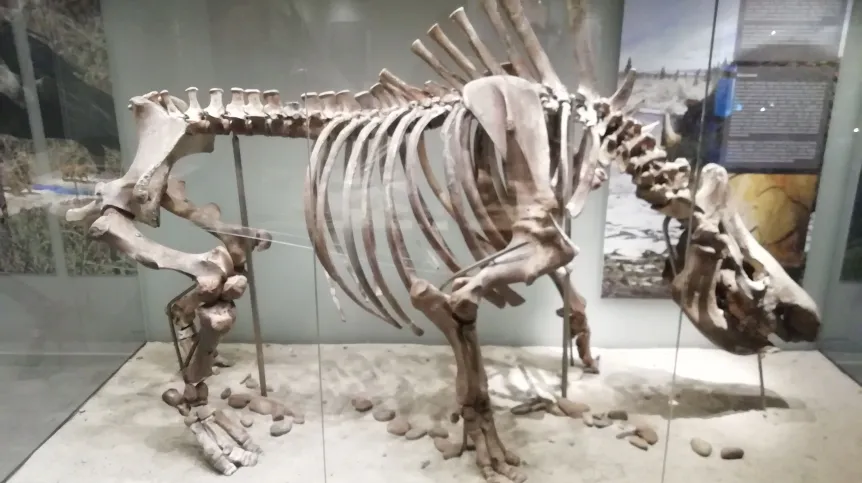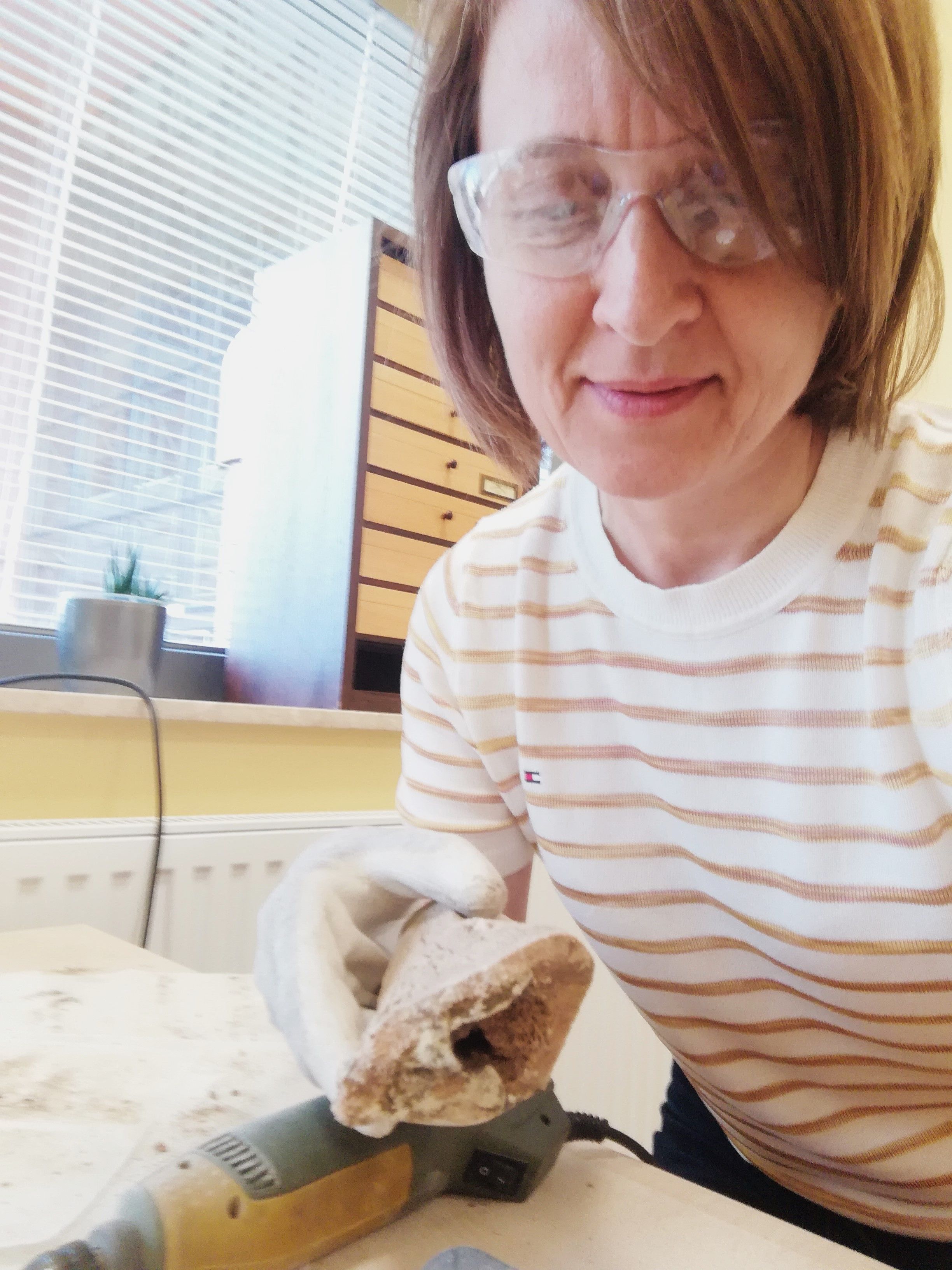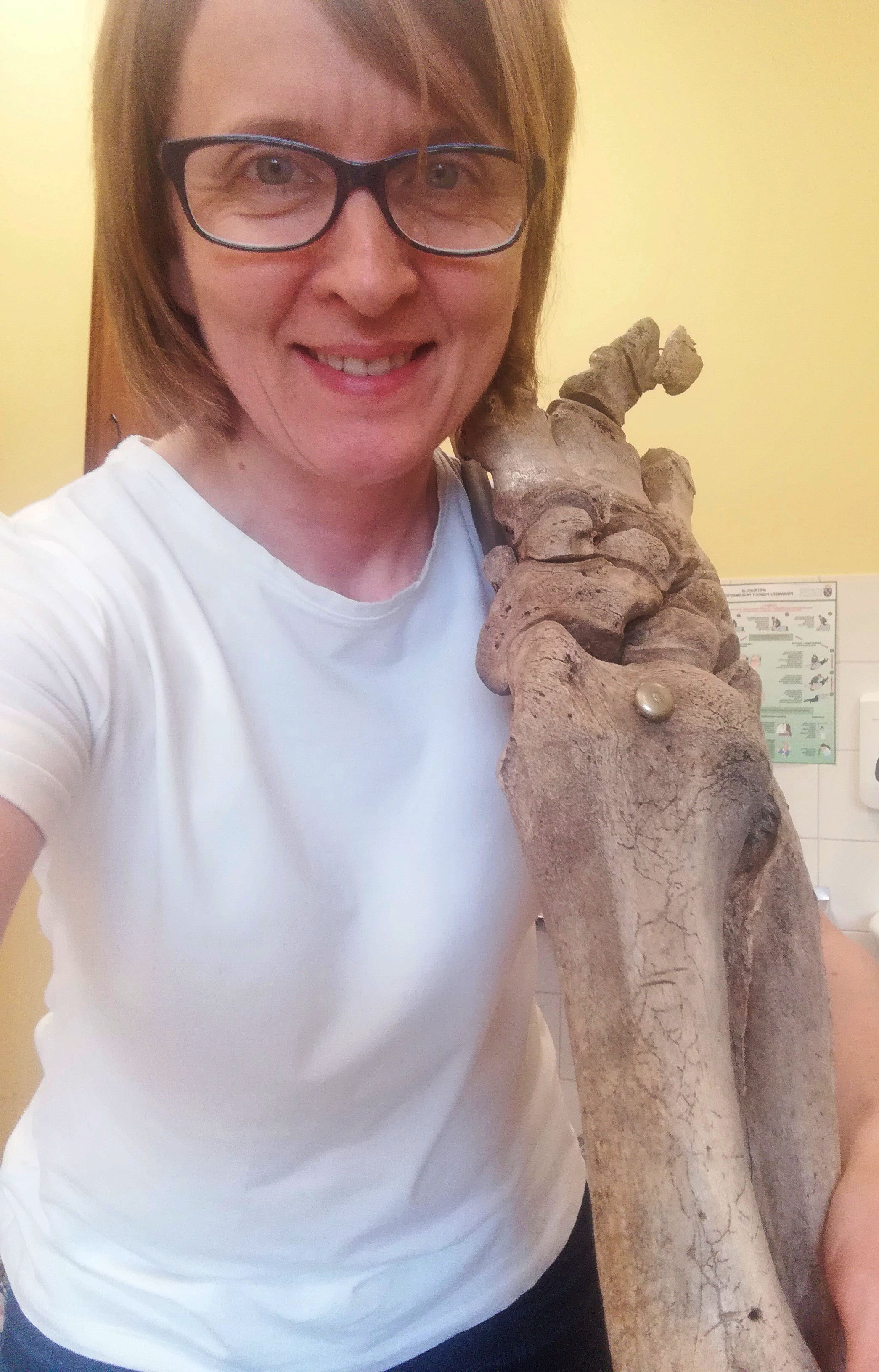
As part of an international research project, Professor Kamilla Pawłowska from the Adam Mickiewicz University in Poznań examined previously unknown-to-science skulls of woolly rhinos and specimens considered lost in Poland. She traced over 100 places in Poland in search of the remains of the extinct species.
The woolly rhinoceros lived in Europe for a very long time, from about 470,000 years ago until the end of the last ice age, about 14,000 years ago. It was a powerful animal with a massive body structure. It had short legs, a high neck and a large head, with two horns. Its body was covered with thick fur. It fed mainly on grasses, but also leaves of shrubs. It was adapted to cold and harsh weather conditions.
The history of these animals in Poland and other European countries is insufficiently known. That is why Professor Pawłowska initiated more extensively planned research. It covers a large area (Europe), and its scope includes the identification of remains, the study of the age and sex of animals, diseases, relations with humans. The WOOLRHINOPOLI project will continue until 2026.
"I have been conducting field research for more than a year and I have visited over 100 places in search of rhinoceros fossils, in particular the woolly rhinoceros. The number of woolly rhinoceros remains in Poland is impressive in relation to the original assumptions', says Professor Pawłowska.

The result of her work is the identification of numerous woolly rhinoceros remains and the revision of others.
'There is a lot of material to study. There are specimens that have been stored for 50-60 years, and no one has done scientific research on them during that time. By looking where few people look, i.e. basements, attics and numerous cardboard boxes, I managed to find specimens that had been considered lost or whose existence was not even known. This was the case with the skulls of woolly rhinos from Warsaw and Wrocław', says Professor Pawłowska.
The number of remains varies from place to place, from one to hundreds of specimens. 'The prospects are great, because the possibility of examining so many remains of a woolly rhinoceros creates an opportunity to collect a lot of data', the researcher says.
One of the last materials she examined was a rhinoceros skeleton from the collection of the Centre for Environmental Education at the Jagiellonian University, where she completed a research fellowship and conducted development work. This was the first stage of the research, including an assessment of the completeness of the skeleton, the degree of preservation of each part, osteometric measurements, and a taphonomic assessment, i.e. the examination of any traces on the surfaces of the specimens.
'The completeness of the skeleton and the very good state of preservation of individual parts are noteworthy. This is related to the low impact of factors that could have a destructive effect on the bones', Professor Pawłowska says. 'In the next stage, I will continue the taphonomic research, I will conduct radiocarbon dating of the sample so that we can find out what period the rhinoceros comes from. We will also perform genetic tests'.
Pawłowska explains that in her research she determines the species and anatomical origin of each specimen, and then records its degree of completeness. She also determines the individual age of the animal at the time of death, takes measurements, records every trace that has been preserved on the surface, collects samples for laboratory tests and prepares photographic documentation.
'The research methodology is very important, which is why I started the research on fossil rhinoceros remains by standardizing and strengthening the methods within the WOOLRHINOPOLI project. This had not been done before in rhinoceros research', she says.

As part of the WOOLRHINOPOLI project, scientists study rhinoceros bones and teeth in the countries those remains come from. However, Professor Pawłowska also conducted research in the Netherlands, where she studied museum and private collections in Rotterdam, Leiden and other places. She studied the woolly rhinoceros specimens there using the same research methods that she uses in Polish research. 'This is extremely important for the comparability of the obtained results', she says.
The WOOLRHINOPOLI project is financed by the Polish National Science Centre and implemented in a consortium with the Centre of New Technologies (CeNT) in Warsaw, with the participation of 10 European scientists from Spain, France, the Netherlands, Moldova, Czechia, Germany, Romania, Italy and the UK.
The project is designed to end with the creation of a comprehensive database of fossil rhinos from Poland and other European countries. As part of it, scientists will analyse the shapes of skulls of these extinct animals, date the remains in order to precisely determine the time of occurrence of the woolly rhinoceros, and conduct genetic studies.
PAP - Science in Poland, Ewelina Krajczyńska-Wujec
ekr/ zan/ kap/
tr. RL













